Have you ever wondered why some people seem to transform overnight into more confident, disciplined versions of themselves? Over 50% of adults who begin training in traditional Okinawan karate report significant boosts in confidence and a reduction in stress within just three months. This isn’t just a hobby; it’s a life-changing path that blends ancient wisdom with modern well-being. Whether you're seeking personal growth, holistic health, or a new circle of lifelong friends, this martial art offers a proven, fast track to transformation.
Unlock Life-Changing Potential: The Impact of Traditional Okinawan Karate
- Did you know that over 50% of adults who start training in traditional Okinawan Karate report increased confidence and reduced stress within just three months? This transformative martial art is more than self-defense—it's a fast track to personal growth.
Traditional Okinawan Karate isn’t just about kicks and punches—it’s a martial art with deep roots that delivers rapid changes to every aspect of life. From day one, practitioners begin forging new levels of discipline, building real self-assurance, and experiencing tangible improvements in mental well-being. The magic lies in the unique blend of movement, breath, and mindful focus, making it more effective than a standard fitness routine. Whether you’re juggling the pressures of adulthood or searching for purpose, this ancient practice empowers you to rise above daily stress.
Institutional research and thousands of student testimonials confirm that enrolling in a traditional Okinawan karate class leads to measurable gains in confidence and overall health. Think of it as a type of training proven by both science and centuries of experience—one which enables rapid personal transformation and sets the foundation for lifelong success. Ready to see results? Let’s explore how this original Okinawan martial art reshapes the mind and body in weeks—not years.
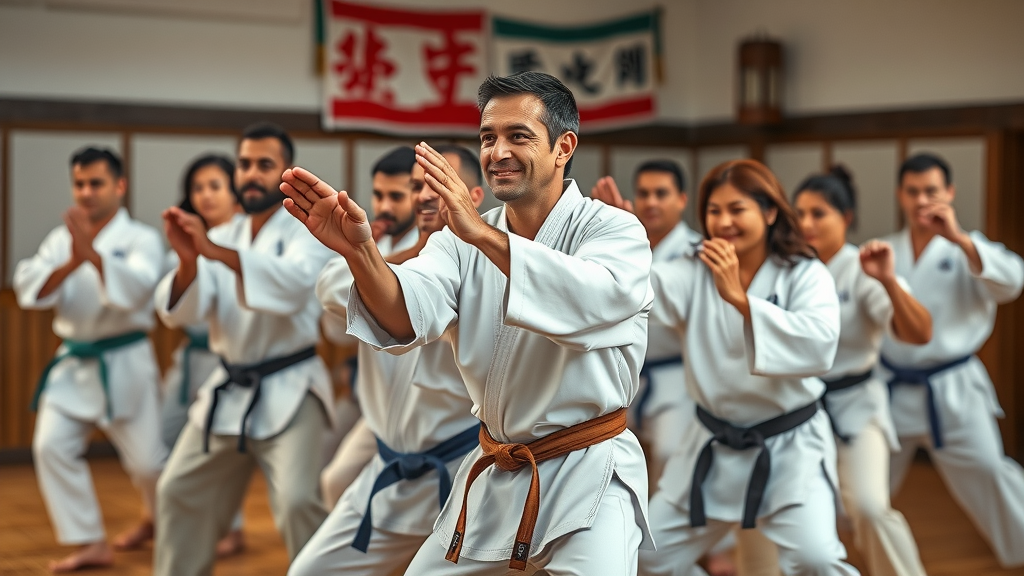
How Traditional Okinawan Karate Transforms Mind and Body
Benefit 1: Building Discipline and Confidence with Traditional Okinawan Karate
One of the most celebrated features of traditional Okinawan karate is its ability to cultivate both inner discipline and outward confidence—traits that rapidly surface, often within the first few months of training. Walking into the dojo, you’re immediately immersed in an environment where respect is mutual, structure is admired, and every achievement is hard-earned. Each class is guided by instructors who harness age-old traditions to help students focus, overcome self-doubt, and push beyond their previous limits. This methodical system draws from martial philosophies refined over generations in the Ryukyu Kingdom, making growth nearly inevitable.
Progress in karate isn’t handed out; it’s achieved through effort and consistency. Earning a new belt in this martial art indigenous to Okinawa does more than mark technical skill—it becomes a symbol of the courage and discipline grown along the way. Students quickly find themselves standing taller, communicating with more self-assurance, and navigating challenges in school, work, and daily life with newfound clarity. And these benefits aren’t reserved just for the young or athletic; every person, regardless of starting point, experiences transformation as they embrace the rigor and ritual of traditional Okinawan karate .
Benefit 2: Improving Physical Strength and Flexibility through Okinawan Martial Arts
Many people start looking into Okinawan martial arts for fitness, and they quickly realize they’re gaining much more than traditional exercise offers. Each class incorporates full-body movements through kata (forms), basic drills, and partner exercises that challenge strength, balance, coordination, and flexibility. Movements draw from centuries of martial refinement, focusing on both the hard (forceful blocks and strikes) and soft (fluid movements and deflection) elements rooted in various types of te . The result? Participants develop strong, toned muscles and impressive flexibility faster than with most mainstream fitness routines.
Scientific studies show that routine engagement in karate improves joint mobility and cardiovascular health. What sets traditional Okinawan karate apart from other types of martial arts is its emphasis on sustainable lifelong movement rather than short-term fitness gains. Whether you’re performing a dynamic kick or steadying yourself in a balanced stance, the circuitry of mind and muscle developed is profound. This approach means students at Gruber’s Karate notice a transformation not just physically—but in how they carry themselves through life.
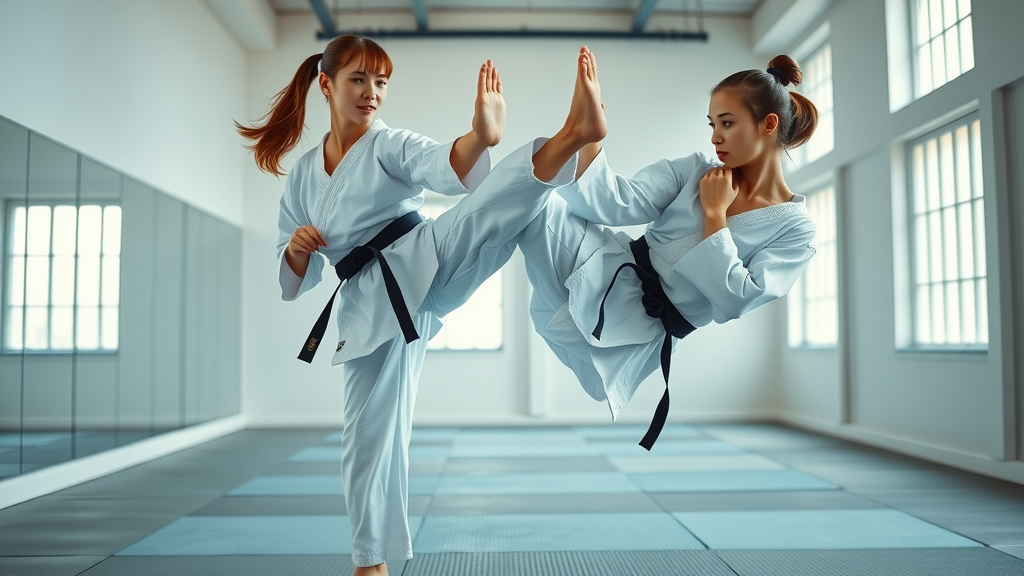
Benefit 3: Reducing Stress with Martial Arts Techniques
Modern life comes with stressors that are hard to shake—but traditional Okinawan karate gives you powerful tools to manage and reduce stress quickly. Training is built on mindful rituals and breathing techniques rooted in ancient practices like kata and meditation. Practitioners learn to regulate their breath, center their thoughts, and release stress through purposeful movement. These skills, taught in every class, quickly become a student’s secret weapon for staying calm under pressure both inside and outside the dojo.
Beyond the physical release, Okinawan martial arts foster a sense of community and support. Stepping onto the dojo mat, students leave worries at the door and plug into a like-minded group focused on self-improvement. Regular practice creates a routine that replaces anxiety with confidence and resilience—qualities which often draw comparisons to meditation or tai chi, but paired with the empowerment of learning a practical self-defense system. Small wonder that so many adults report reduced stress and a more positive outlook within weeks of joining.

Discover the Rich Tradition: What Makes Traditional Okinawan Karate Unique?
The History of Traditional Okinawa and Its Martial Arts
The roots of traditional Okinawan karate stretch back over 500 years to the Ryukyu Kingdom , where the art was shaped by political necessity, cultural exchange with China, and strict weapons bans. This forced Okinawans to develop effective hand-to-hand techniques, blending influences from Chinese kung fu with indigenous Okinawan “te” (hand) practices. Over the years, the fusion evolved into a practical, holistic type of martial art designed for personal development and effective self-defense.
During the early 20th century and post- World War II era, masters from Okinawa introduced their refined systems to mainland Japan and, eventually, the world. Legendary teachers safeguarded the unique identity of their homeland’s martial arts, ensuring that Okinawan karate remained distinct from the sport-oriented styles developed elsewhere. The timeless philosophies, spiritual discipline, and technical mastery that originated in the capital city of the Ryukyu Kingdom continue to influence martial arts classes and instructors worldwide.

Cultural Foundations of Traditional Okinawan Karate
Beyond techniques, traditional Okinawan karate represents a deep cultural legacy rooted in humility, respect, and personal growth. Okinawan society—historically shaped by challenges, resourcefulness, and a genuine desire for peaceful living—embedded these values into every aspect of training. Bowing before entering the dojo, rituals of mutual respect between instructors and students, and community-centered events all reflect the harmony at the heart of this art.
Unlike many modern martial arts, Okinawan karate places the emphasis on helping each individual realize their potential rather than pursuing trophies or external recognition. The supportive dojo community, where mentors and peers push each other to grow, quickly becomes a second family for many. This cultural richness doesn’t just make sessions enjoyable—it ensures that progress goes beyond skill to touch character, relationships, and the way students interact with friends and family for years to come.
The Difference Between Okinawan Karate and Other Martial Arts
While all martial arts aim to unify mind and body, Okinawan karate is especially distinct in its philosophy and approach. Unlike the more competition-focused Japanese karate or Chinese kung fu, Okinawan styles prioritize practical self-defense, personal health, and non-violent conflict resolution. Movements emphasize circular techniques, rooted stances, and techniques designed for real-world situations—reflecting centuries of adaptation by the people indigenous to the area.
Furthermore, the inclusive nature of traditional Okinawan karate makes it accessible to all ages and fitness levels. The focus on lifelong improvement and inner growth means classes remain welcoming, challenging, and relevant whether you’re eight or eighty. This approach stands apart from other martial arts that might prioritize athleticism or competition, making it ideal for anyone seeking holistic development through a time-honored tradition.
Types of Te: Exploring the Core Styles of Traditional Okinawan Karate
The 4 Foundational Styles: Goju-Ryu, Shorin-Ryu, Uechi-Ryu, and Isshin-Ryu
The vibrant world of traditional Okinawan karate features four core styles—each offering a unique path to mastery and self-improvement. Goju-Ryu is celebrated for its powerful strikes, dynamic breathing, and melding of “hard” and “soft” techniques. Shorin-Ryu emphasizes agility, lightning-fast movements, and upright stances inspired by the original “te” of Shuri, the ancient capital city of the Ryukyu Kingdom. Uechi-Ryu introduces distinct Chinese influences through circular motions and specialized conditioning drills, while Isshin-Ryu blends practicality with adaptability, focusing on direct self-defense and efficiency.
Whether you seek the flowing balance of Goju-Ryu, the speed and precision of Shorin-Ryu, the close-range power of Uechi-Ryu, or the integrated, practical nature of Isshin-Ryu, each style remains rooted in centuries-old traditions and offers pathways for both personal health and martial mastery. The instructors at Gruber’s Karate help students select the system that best aligns with their personality, goals, and learning style—ensuring that every journey through Okinawan martial arts classes is both individualized and rewarding.
| Style | Key Focus | Signature Techniques | Training Emphasis |
|---|---|---|---|
| Goju-Ryu | Hard and soft, breathing | Sanchin kata, circular blocks | Body conditioning, slow/fast movement |
| Shorin-Ryu | Speed, natural movement | Quick strikes, upright stances | Light, swift techniques, balance |
| Uechi-Ryu | Circular, close combat | Seisan kata, spear hand | Iron body training, quick pivots |
| Isshin-Ryu | Directness, practicality | Vertical punches, low kicks | Efficient drills, simple movements |
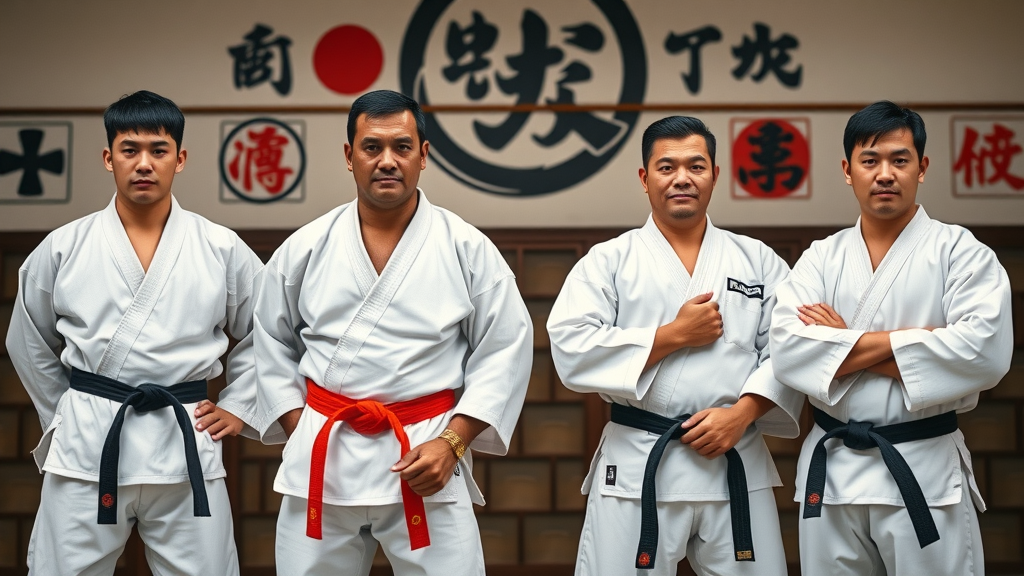
Why Choose a Traditional Okinawan Style for Your Martial Arts Journey?
Choosing traditional Okinawan karate sets you apart from the crowd. These styles offer more than just effective self-defense—they promote genuine, holistic improvement across body and mind. Their practical, time-tested curricula are open to everyone, regardless of prior experience or fitness level, enabling beginners to make progress as quickly as seasoned athletes.
Beyond personal benefit, Okinawan karate creates a powerful sense of community and shared tradition. Students become part of a living legacy, learning from instructors dedicated to preserving authentic methods and philosophies. Whether your goal is stress relief, self-defense, or building lifelong friendships, there’s an Okinawan style and martial arts class for you. Ready to experience firsthand why Okinawan karate is considered one of the world’s most influential and enduring martial arts? There’s no better place to start than at Gruber’s Karate.
Real Results: How Traditional Okinawan Karate Changes Lives Fast
"Within my first six months of practicing traditional Okinawan karate, my outlook on life completely shifted—I found focus, resilience, and an incredible new sense of purpose." – Student, Gruber’s Karate
- Enhanced mental resilience
- Better physical health
- Heightened self-defense skills
- Lifelong friendships developed in the dojo
Real transformation stories flood in from students at all stages. From shy beginners to experienced martial artists, people consistently report a marked improvement in focus, courage, and health after joining Gruber’s Karate. Adults rebuild their confidence faster than they believed possible, kids flourish in discipline and positivity, and everyone benefits from a supportive community culture. It’s not surprising that so many call Okinawan karate the best type of martial art for real, lasting change.
This isn’t just about workouts or learning to punch—it’s about living better, together. Benefits extend beyond the dojo walls, impacting work, relationships, and even sleep and mental health. Are you ready to join a martial arts school where lifelong growth is the standard, not the exception? Your new story starts here.
People Also Ask: What is traditional Okinawan karate?
Answer: Traditional Okinawan karate is a martial art developed in the Ryukyu Kingdom, blending Chinese martial influences with local Okinawan 'te' techniques. It focuses on practical self-defense, discipline, and holistic personal development.
People Also Ask: What are the 4 styles of karate?
Answer: The four primary Okinawan karate styles are Goju-Ryu, Shorin-Ryu, Uechi-Ryu, and Isshin-Ryu, each embodying unique philosophies and technical approaches within the martial arts tradition.
People Also Ask: What is the best Okinawan karate style?
Answer: The 'best' Okinawan karate style depends on individual goals and learning preferences. Goju-Ryu is renowned for its power and breathing techniques, while Shorin-Ryu emphasizes speed and agility. All traditional Okinawan karate styles provide distinct advantages.
People Also Ask: Is Goju-Ryu Okinawan karate?
Answer: Yes, Goju-Ryu is one of the principal styles of Okinawan karate, distinguished by its blend of hard (go) and soft (ju) techniques. It is globally practiced and highly respected among traditional Okinawan martial arts.
Frequently Asked Questions on Traditional Okinawan Karate
- How quickly can I expect results from Okinawan karate training? Most students notice increased confidence, reduced stress, and improved physical health within the first three months. Consistent practice in a structured dojo accelerates these benefits.
- Is Okinawan karate suitable for beginners and all ages? Absolutely! Traditional Okinawan karate is designed for everyone, regardless of experience or fitness level. Instructors adapt classes for children, adults, and seniors alike.
- What makes traditional Okinawan karate different from Japanese styles? Okinawan karate remains closer to its roots, focusing on practical self-defense and holistic development rather than competition. Its techniques are evolved from the original martial art indigenous to Okinawa.
- Can I visit Gruber’s Karate for a free class? Yes! Gruber’s Karate welcomes new students with a complimentary trial class—an easy way to experience the difference firsthand.
Get Started with Traditional Okinawan Karate at Gruber’s Karate
Video: Welcome to Gruber’s Karate – Discover the Power and Tradition of Okinawan Martial Arts. Includes student testimonials and class highlights.
Start Your Martial Arts Journey: Enroll Today and Experience the Gruber's Karate Difference
- Gruber’s Karate is Gurnee’s 5 Star Rated Trusted Martial Arts Center
- Expert instruction in traditional Okinawan karate for all levels
- Immediate benefits in confidence, health, and discipline

Build confidence, discipline, and strength. Enroll NOW at Gruber’s Karate, Gurnee’s 5 Star Rated Trusted Martial Arts Center! Sensei@gruberskarate.com Gruber's Karate 5725 Stearns School Rd Gurnee, IL 60031 (224) 347-6655 GrubersKarate.com
Take your first step today—experience life-changing benefits and join a community that supports your journey. Sign up at Gruber’s Karate and change your life, fast!
Traditional Okinawan Karate is a martial art with deep historical roots and diverse styles, each offering unique philosophies and techniques. For instance, Gōjū-ryū combines hard and soft techniques, emphasizing both linear attacks and circular movements, and places significant focus on correct breathing methods. ( en.wikipedia.org ) Similarly, Matsubayashi-ryū , founded by Shōshin Nagamine, integrates elements from Shuri-te and Tomari-te, reflecting a rich blend of Okinawan martial traditions. ( en.wikipedia.org )
If you’re interested in exploring these styles further, the article “Styles of Okinawan Karate” provides detailed insights into various traditional forms, including Goju-ryu, Uechi-ryu, and Shorin-ryu. ( ageshiojapan.com ) Additionally, “Everything You Need to Know About Traditional Okinawan Karate” offers a comprehensive overview of the history, techniques, and cultural significance of these martial arts. ( karatemojo.de )
For those seeking authentic training experiences, “Learning Traditional Okinawan Karate: Where to Train” highlights reputable dojos and programs that immerse practitioners in the rich heritage of Okinawan Karate. ( discoverjapan.blog )
Exploring these resources will deepen your understanding of Traditional Okinawan Karate and guide you toward a practice that aligns with your personal goals.
 Add Row
Add Row  Add
Add 

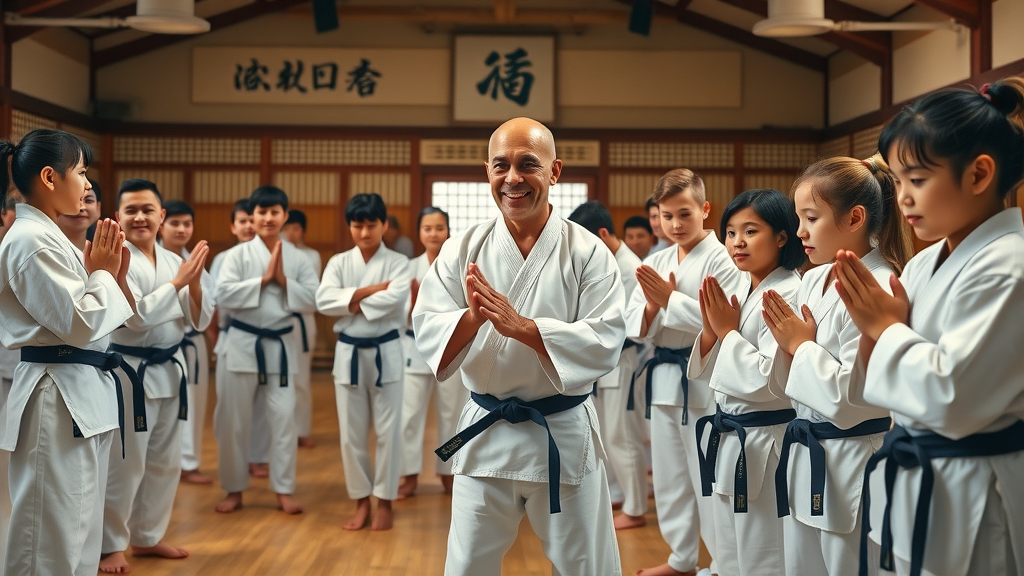
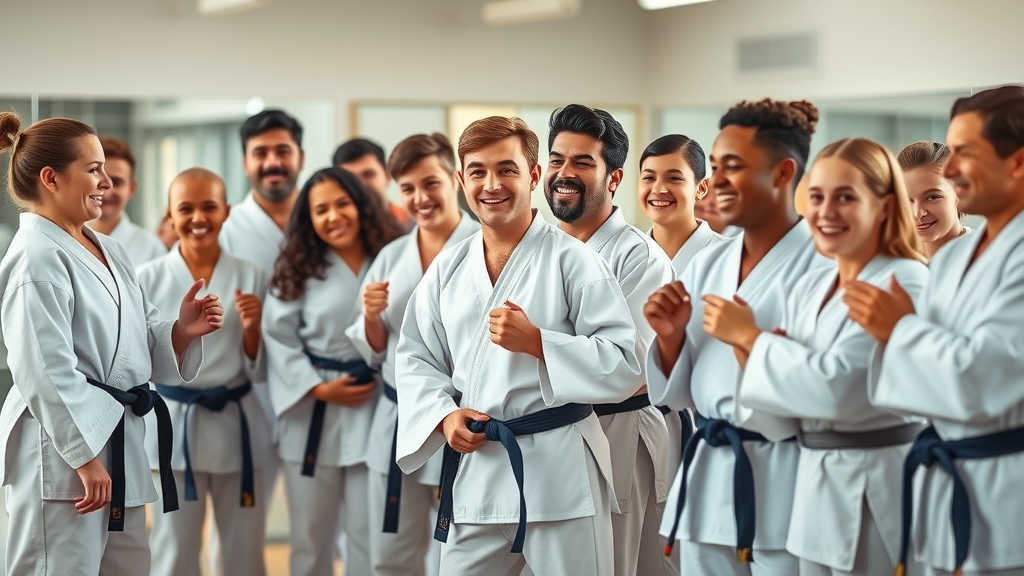
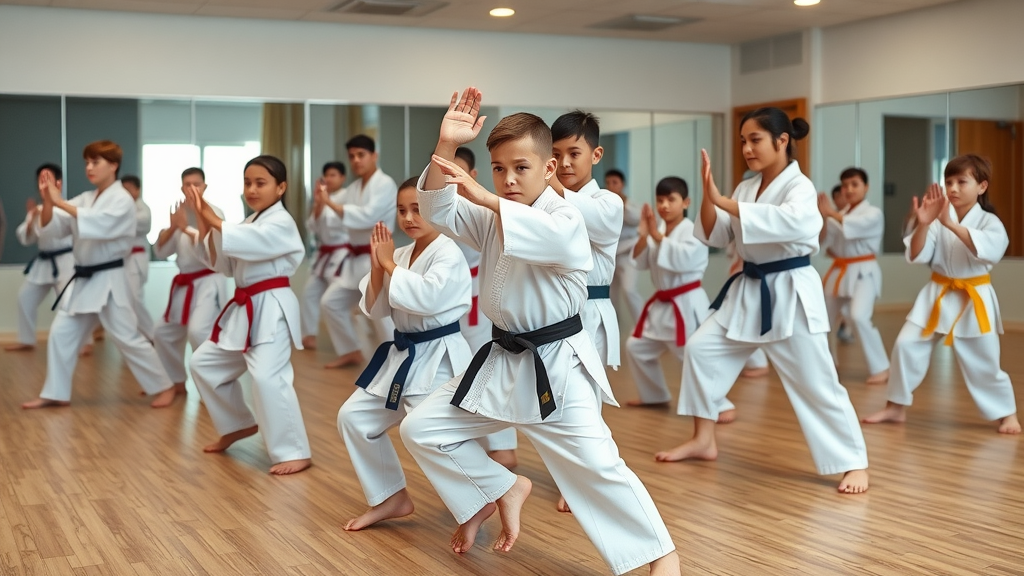
Write A Comment